
The organized environmental movement is represented by a wide range of non-governmental organizations or NGOs that seek to address environmental issues in the United States. They operate on local, national, and international scales. Environmental NGOs vary widely in political views and in the ways they seek to influence the environmental policy of the United States and other governments.

The Three Mile Island accident was a partial meltdown of the Three Mile Island, Unit 2 (TMI-2) reactor on the Susquehanna River in Londonderry Township, Pennsylvania, near the Pennsylvania capital of Harrisburg. It began at 4 a.m. on March 28, 1979. It is the most significant accident in U.S. commercial nuclear power plant history. On the seven-point International Nuclear Event Scale, it is rated Level 5 – Accident with Wider Consequences.

The Nuclear Regulatory Commission (NRC) is an independent agency of the United States government tasked with protecting public health and safety related to nuclear energy. Established by the Energy Reorganization Act of 1974, the NRC began operations on January 19, 1975, as one of two successor agencies to the United States Atomic Energy Commission. Its functions include overseeing reactor safety and security, administering reactor licensing and renewal, licensing radioactive materials, radionuclide safety, and managing the storage, security, recycling, and disposal of spent fuel.
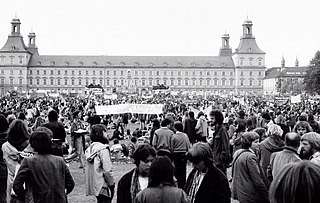
The anti-nuclear movement is a social movement that opposes various nuclear technologies. Some direct action groups, environmental movements, and professional organisations have identified themselves with the movement at the local, national, or international level. Major anti-nuclear groups include Campaign for Nuclear Disarmament, Friends of the Earth, Greenpeace, International Physicians for the Prevention of Nuclear War, Peace Action, Seneca Women's Encampment for a Future of Peace and Justice and the Nuclear Information and Resource Service. The initial objective of the movement was nuclear disarmament, though since the late 1960s opposition has included the use of nuclear power. Many anti-nuclear groups oppose both nuclear power and nuclear weapons. The formation of green parties in the 1970s and 1980s was often a direct result of anti-nuclear politics.
The Abalone Alliance (1977–1985) was a nonviolent civil disobedience group formed to shut down the Pacific Gas and Electric Company's Diablo Canyon Power Plant near San Luis Obispo on the central California coast in the United States. They modeled their affinity group-based organizational structure after the Clamshell Alliance which was then protesting the Seabrook Nuclear Power Plant in coastal New Hampshire. The group of activists took the name "Abalone Alliance" referring to the tens of thousands of wild California Red Abalone that were killed in 1974 in Diablo Cove when the unit's plumbing had its first hot flush.

The anti-nuclear movement in the United States consists of more than 80 anti-nuclear groups that oppose nuclear power, nuclear weapons, and/or uranium mining. These have included the Abalone Alliance, Clamshell Alliance, Committee for Nuclear Responsibility, Nevada Desert Experience, Nuclear Information and Resource Service, Physicians for Social Responsibility, Plowshares Movement, Women Strike for Peace, and Women's International League for Peace and Freedom. Some fringe aspects of the anti-nuclear movement have delayed construction or halted commitments to build some new nuclear plants, and have pressured the Nuclear Regulatory Commission to enforce and strengthen the safety regulations for nuclear power plants. Most groups in the movement focus on nuclear weapons.
The 1970s proved to be a pivotal period for the anti-nuclear movement in California. Opposition to nuclear power in California coincided with the growth of the country's environmental movement. Opposition to nuclear power increased when President Richard Nixon called for the construction of 1000 nuclear plants by the year 2000.

Critical Masses: Opposition to Nuclear Power in California, 1958–1978 is the first detailed history of the anti-nuclear movement in the United States, written by Thomas Wellock. It is also the first state-level research on the subject with a focus on California. Reviewer Paula Garb has said:
The book is rich with vivid verbal pictures and the passionate voices of participants on all sides of the controversy around the peaceful atom. It is based on interviews, documents from state and federal archives, and activist papers. Wellock brings to this project the expertise of a former engineer for civilian and navy nuclear reactors, a thorough archivist, and a sensitive interviewer.
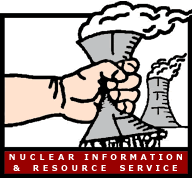
More than 80 anti-nuclear groups are operating, or have operated, in the United States. These include Abalone Alliance, Clamshell Alliance, Greenpeace USA, Institute for Energy and Environmental Research, Musicians United for Safe Energy, Nevada Desert Experience, Nuclear Control Institute, Nuclear Information and Resource Service, Public Citizen Energy Program, Shad Alliance, and the Sierra Club. These are direct action, environmental, health, and public interest organizations who oppose nuclear weapons and/or nuclear power. In 1992, the chairman of the Nuclear Regulatory Commission said that "his agency had been pushed in the right direction on safety issues because of the pleas and protests of nuclear watchdog groups".
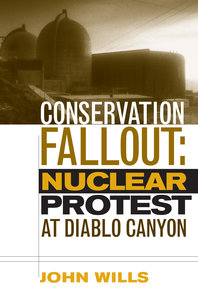
Conservation Fallout: Nuclear Protest at Diablo Canyon is a 2006 book by John Wills.
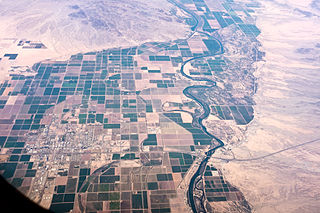
The Sundesert Nuclear Power Plant was a proposed California nuclear power station, formally submitted in 1976. Facing firm opposition from the state's Governor Jerry Brown and denied a permit by a state agency, plans for the construction of the power facility were rejected in 1978 after 100 million dollars had been spent towards its construction. The Sundesert proposal was the last major attempt to build a nuclear plant in California.
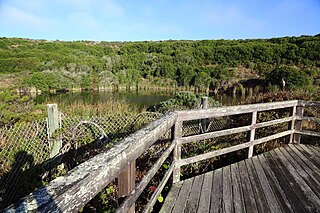
The Bodega Bay Nuclear Power Plant was a proposed Northern California nuclear power facility that was stopped by local activism in the 1960s and never built. The foundations, located 2 miles (3.2 km) west of the active San Andreas Fault, were being dug at the time the plant was cancelled. The action has been termed "the birth of the anti-nuclear movement."
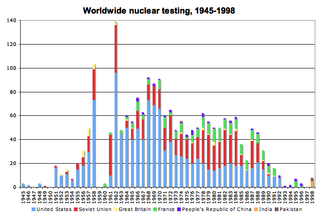
The application of nuclear technology, both as a source of energy and as an instrument of war, has been controversial.
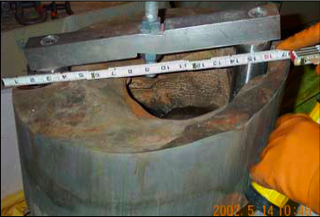
The United States Government Accountability Office reported more than 150 incidents from 2001 to 2006 of nuclear plants not performing within acceptable safety guidelines. According to a 2010 survey of energy accidents, there have been at least 56 accidents at nuclear reactors in the United States. The most serious of these was the Three Mile Island accident in 1979. Davis-Besse Nuclear Power Plant has been the source of two of the top five most dangerous nuclear incidents in the United States since 1979. Relatively few accidents have involved fatalities.

The nuclear energy policy of the United States began in 1954 and continued with the ongoing building of nuclear power plants, the enactment of numerous pieces of legislation such as the Energy Reorganization Act of 1974, and the implementation of countless policies which have guided the Nuclear Regulatory Commission and the Department of Energy in the regulation and growth of nuclear energy companies. This includes, but is not limited to, regulations of nuclear facilities, waste storage, decommissioning of weapons-grade materials, uranium mining, and funding for nuclear companies, along with an increase in power plant building. Both legislation and bureaucratic regulations of nuclear energy in the United States have been shaped by scientific research, private industries' wishes, and public opinion, which has shifted over time and as a result of different nuclear disasters.
Rose Gaffney (1895–1979) was an environmental activist known for fighting the construction of the Bodega Bay Nuclear Power Plant in Sonoma County, California. She is sometimes referred to as the "mother of ecology." In 2003, she was the subject of a documentary called "Rose Gaffney: The Belle of Bodega Bay."
Phillip S. Berry (1937–2013) was national President of the Sierra Club.

Anti-nuclear protests in the United States have occurred since the development of nuclear power plants in the United States. Examples include Clamshell Alliance protests at Seabrook Station Nuclear Power Plant, Abalone Alliance protests at Diablo Canyon Power Plant, and those following the Three Mile Island accident in 1979.













